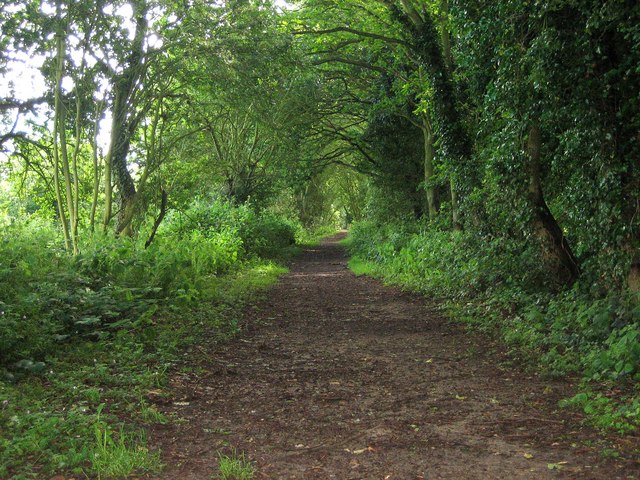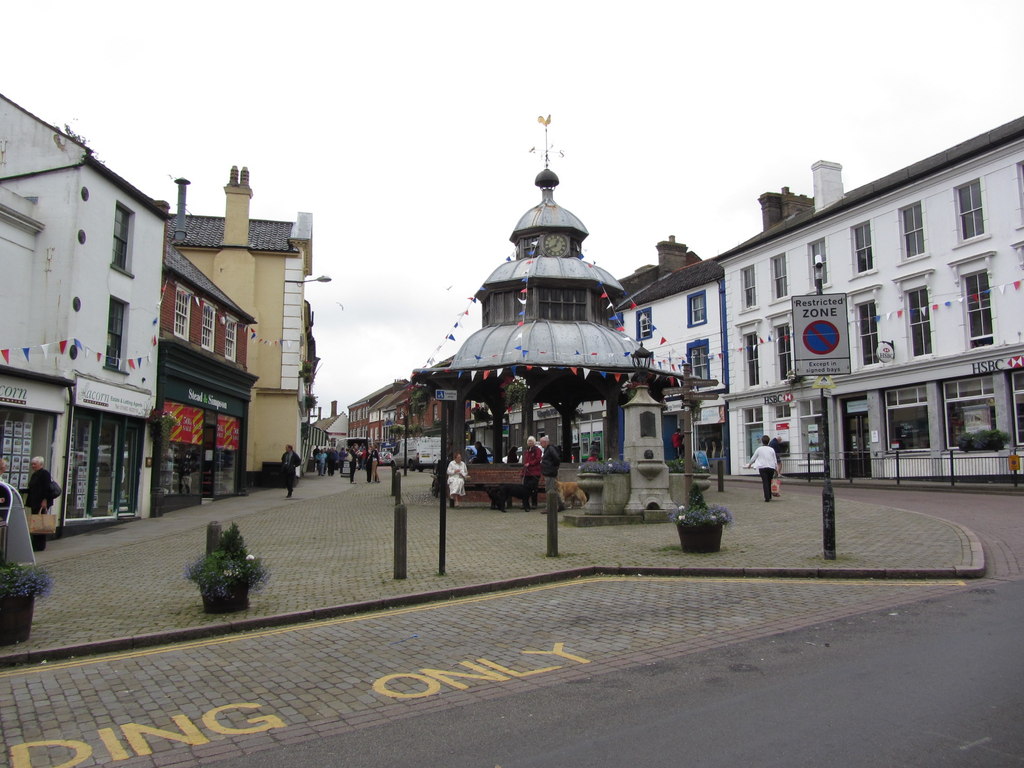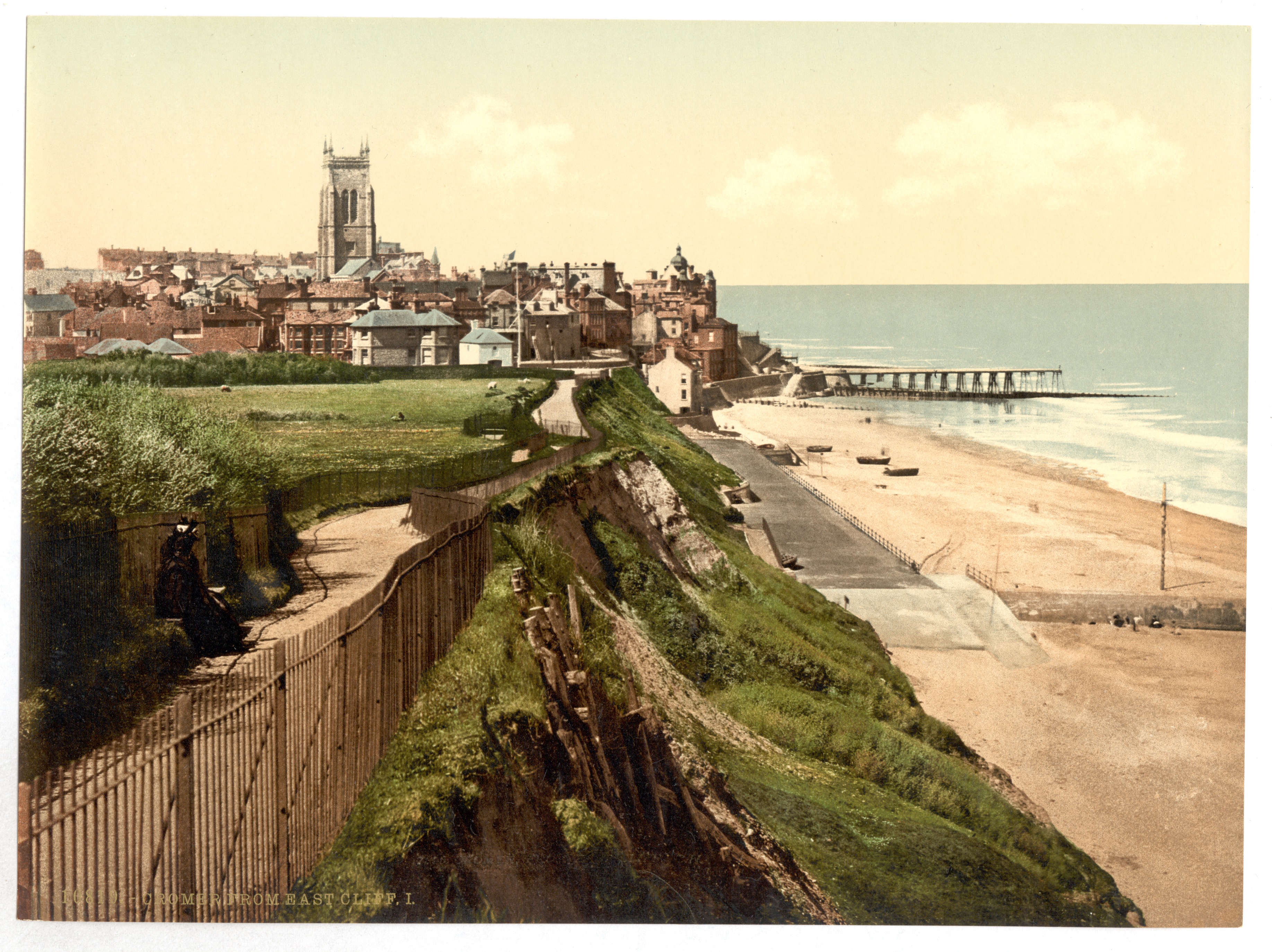|
Northrepps
Northrepps is a village and a civil parish in the English county of Norfolk. It is southeast of Cromer, north of Norwich and north of London. The village lies west of the A149 which runs between Kings Lynn and Great Yarmouth. The nearest railway station is at Cromer for the Bittern Line which runs between Sheringham, Cromer and Norwich. The nearest airport is Norwich International Airport. The village and parish of Northrepps had in the 2001 census a population of 839, increasing to 886 at the 2011 Census. For the purposes of local government, the village falls within the district of North Norfolk. Description The parish of Northrepps was reduced in size in 1906, losing land to the parish of Overstrand which lies to the north. The parish boundary to the north-west is with Cromer, to the north-east with Sidestrand. To the west are the boundaries with Felbrigg and Roughton whilst to the south is the parish of Southrepps. At its nearest point the parish is just 500 metres fro ... [...More Info...] [...Related Items...] OR: [Wikipedia] [Google] [Baidu] |
Paston Way
The Paston Way is a footpath. It is entirely within the English county of Norfolk in the United Kingdom. The footpath is twenty miles in length, the portals to the path are Cromer at its northwestern end and North Walsham at it southeastern end. The Designation The Paston way takes its name from the Paston Family who during the Medieval and Tudor periods were the dominant and wealthy landowners in which much of the trail passes. The Paston Family in turn had taken their name after the north eastern coastal village of Paston. Their origins were from Wulston, one of William the Conqueror’s men who arrived with him in 1066. Description of the Route Section 1 Starting at the southeastern end, the path begins at the Parish Church of St Nicholas in the town of North Walsham. This is also the path's conjunction with the Weavers Way. Leaving the church the route heads northwards along the old Mundesley road out of the town. On the outskirts of the town the path follows the tr ... [...More Info...] [...Related Items...] OR: [Wikipedia] [Google] [Baidu] |
Frogshall
Frogshall is a small hamlet within the civil parish of Northrepps in the English county of Norfolk. The hamlet is southeast of Cromer, north of Norwich and north of London. Craft Lanruns through the hamlet between Northrepps and Southrepps. The nearest railway station is at Gunton on the Bittern Line which runs between Sheringham, Cromer and Norwich. The nearest airport is Norwich International Airport. The hamlet as part of the greater parish of Northrepps had in the 2011 census, a population of 886. For the purposes of local government, the hamlet falls within the district of North Norfolk. Description The hamlet is a small scattered settlement in the wooded valley of the River Mun in the south-east of the parish of Northrepps. Within the hamlet is the house called Templewood. Most of the houses were originally workers' cottages for the estate workers. Craft Lane gives road access to the hamlet from Southrepps and Northrepps. The lane is also a designated Quiet L ... [...More Info...] [...Related Items...] OR: [Wikipedia] [Google] [Baidu] |
William De Warenne, 1st Earl Of Surrey
William de Warenne, 1st Earl of Surrey, Lord of Lewes, Seigneur de Varennes (died 1088), was a Norman nobleman created Earl of Surrey under William II Rufus. He is among the few known from documents to have fought under William the Conqueror at the Battle of Hastings in 1066. At the time of the Domesday Survey in 1086, he held extensive lands in 13 counties, including the Rape of Lewes, a tract now divided between the ceremonial counties of East Sussex and West Sussex. Early career William was a son of Rodulf or Ralph de Warenne and Emma, and reported to have descended from a sibling of Duchess Gunnor, wife of Duke Richard I. Chronicler Robert of Torigny reported, in his additions to the ''Gesta Normannorum Ducum'' of William of Jumièges, that William de Warenne and Anglo-Norman baron Roger de Mortimer were both sons of an unnamed niece of Gunnor. Unfortunately, Robert's genealogies are somewhat confused – elsewhere he gives Roger as the son of William, and yet again makes bo ... [...More Info...] [...Related Items...] OR: [Wikipedia] [Google] [Baidu] |
Village Sign
In many parts of England, an ornamental village sign is erected to announce the village name to those entering the village. They are typically placed on the principal road entrance or in a prominent location such as a village green. The design often depicts a particularly characteristic feature of the village or a scene from its history, heritage, or culture. They are typically made of wood or metal or a combination of both, the designs are often made by the local community. Ornamental timber and iron signs were common historically to identify buildings of importance such as inns or town halls. However, the tradition of village signs is believed to have started in Norfolk early in the 20th century when Edward VII suggested that village signs would aid motorists and give a feature of interest on the Sandringham Estate. The spread of interest beyond Norfolk can be attributed to Prince Albert, Duke of York (later George VI) who gave a speech to the Royal Academy in 1920 promoting ... [...More Info...] [...Related Items...] OR: [Wikipedia] [Google] [Baidu] |
North Norfolk
North Norfolk is a local government district in Norfolk, England. Its council is based in Cromer. The population at the 2011 Census was 101,149. History The district was formed on 1 April 1974, under the Local Government Act 1972. It was a merger of Cromer Urban District, North Walsham Urban District, Sheringham Urban District, Wells-next-the-Sea Urban District, Erpingham Rural District, Smallburgh Rural District, and Walsingham Rural District. The district was originally to be called Pastonacres, but changed its name by resolution of the council and permission of the Secretary of State for Environment before it formally came into existence on 1 April 1974. Politics Elections to the district council are held every four years, with all of the seats on the council up for election every fourth year. The council was run by a Conservative administration, the Conservative party having gained a majority of 8 seats at the 2011 elections, which they increased to 18 at the 20 ... [...More Info...] [...Related Items...] OR: [Wikipedia] [Google] [Baidu] |
Cromer
Cromer ( ) is a coastal town and civil parish on the north coast of the English county of Norfolk. It is north of Norwich, north-northeast of London and east of Sheringham on the North Sea coastline. The local government authorities are North Norfolk District Council, whose headquarters is on Holt Road in the town, and Norfolk County Council, based in Norwich. The civil parish has an area of and at the 2011 census had a population of 7,683. The town is notable as a traditional tourist resort and for the Cromer crab, which forms the major source of income for local fishermen. The motto ''Gem of the Norfolk Coast'' is highlighted on the town's road signs. History The town has given its name to the ''Cromerian Stage'' or ''Cromerian Complex'', also called the ''Cromerian'', a stage in the Pleistocene glacial history of north-western Europe. Cromer is not mentioned in the ''Domesday Book'' of 1086. The place-name 'Cromer' is first found in a will of 1262 and could mean 'C ... [...More Info...] [...Related Items...] OR: [Wikipedia] [Google] [Baidu] |
Felbrigg
Felbrigg is a small village just south of Cromer in Norfolk, England.''OS Explorer Map 24'' (Edition A 1997) – ''Norfolk Coast Central''. . The Danish name means a 'plank bridge'. Historians believe that the original village was clustered around its Perpendicular church, St Margaret's Church, Felbrigg, in the grounds of Felbrigg Hall, a Jacobean mansion built in the early 17th century, a mile to the east of the present village. In the church are 14th-century monumental brasses of Sir Simon de Felbrigge and his wife, the original Lord of the Manor Lord of the Manor is a title that, in Anglo-Saxon England, referred to the landholder of a rural estate. The lord enjoyed manorial rights (the rights to establish and occupy a residence, known as the manor house and demesne) as well as seig ... here. Notes External links * {{authority control Villages in Norfolk Civil parishes in Norfolk North Norfolk ... [...More Info...] [...Related Items...] OR: [Wikipedia] [Google] [Baidu] |
John Henry Gurney Sr
John is a common English name and surname: * John (given name) * John (surname) John may also refer to: New Testament Works * Gospel of John, a title often shortened to John * First Epistle of John, often shortened to 1 John * Second Epistle of John, often shortened to 2 John * Third Epistle of John, often shortened to 3 John People * John the Baptist (died c. AD 30), regarded as a prophet and the forerunner of Jesus Christ * John the Apostle (lived c. AD 30), one of the twelve apostles of Jesus * John the Evangelist, assigned author of the Fourth Gospel, once identified with the Apostle * John of Patmos, also known as John the Divine or John the Revelator, the author of the Book of Revelation, once identified with the Apostle * John the Presbyter, a figure either identified with or distinguished from the Apostle, the Evangelist and John of Patmos Other people with the given name Religious figures * John, father of Andrew the Apostle and Saint Peter * Pope Joh ... [...More Info...] [...Related Items...] OR: [Wikipedia] [Google] [Baidu] |
Pannage
Pannage (also referred to as ''Eichelmast'' or ''Eckerich'' in Germany, Switzerland, Liechtenstein, Luxembourg, Austria, Slovenia and Croatia) is the practice of releasing livestock-domestic pig, pigs in a forest, so that they can feed on fallen acorns, beechmast, Sweet Chestnut, chestnuts or other Nut (fruit), nuts. Historically, it was a right or privilege granted to local people on common land or in royal forests.H. R. Loyn, ''Anglo-Saxon England and the Norman Conquest'', 2nd ed. 1991:369. Pannage had two very useful purposes in Middle Ages, Medieval times: in Domestic pig#Rooting, rooting around looking for nuts, they also turned the soil and broke it. Pig-rooting prevented soil compaction and released nutrients for plant growth. It was also fattened pigs for slaughter. Especially in the eastern shires of England, pannage was so prominent a value in the economic importance of woodland that it was often employed, as in ''Domesday Book'' (1086), as a measurement. Customarily ... [...More Info...] [...Related Items...] OR: [Wikipedia] [Google] [Baidu] |
Domesday Book
Domesday Book () – the Middle English spelling of "Doomsday Book" – is a manuscript record of the "Great Survey" of much of England and parts of Wales completed in 1086 by order of King William I, known as William the Conqueror. The manuscript was originally known by the Latin name ''Liber de Wintonia'', meaning "Book of Winchester", where it was originally kept in the royal treasury. The '' Anglo-Saxon Chronicle'' states that in 1085 the king sent his agents to survey every shire in England, to list his holdings and dues owed to him. Written in Medieval Latin, it was highly abbreviated and included some vernacular native terms without Latin equivalents. The survey's main purpose was to record the annual value of every piece of landed property to its lord, and the resources in land, manpower, and livestock from which the value derived. The name "Domesday Book" came into use in the 12th century. Richard FitzNeal wrote in the ''Dialogus de Scaccario'' ( 1179) that the book ... [...More Info...] [...Related Items...] OR: [Wikipedia] [Google] [Baidu] |
Old English
Old English (, ), or Anglo-Saxon, is the earliest recorded form of the English language, spoken in England and southern and eastern Scotland in the early Middle Ages. It was brought to Great Britain by Anglo-Saxon settlement of Britain, Anglo-Saxon settlers in the mid-5th century, and the first Old English literature, Old English literary works date from the mid-7th century. After the Norman conquest of 1066, English was replaced, for a time, by Anglo-Norman language, Anglo-Norman (a langues d'oïl, relative of French) as the language of the upper classes. This is regarded as marking the end of the Old English era, since during this period the English language was heavily influenced by Anglo-Norman, developing into a phase known now as Middle English in England and Early Scots in Scotland. Old English developed from a set of Anglo-Frisian languages, Anglo-Frisian or Ingvaeonic dialects originally spoken by Germanic peoples, Germanic tribes traditionally known as the Angles, Sa ... [...More Info...] [...Related Items...] OR: [Wikipedia] [Google] [Baidu] |
A140 Road
The A140 is an 'A-class' road in Norfolk and Suffolk, East Anglia, England partly following the route of the Roman Pye Road. It runs from the A14 near Needham Market to the A149 south of Cromer. It is of primary status for the entirety of its route. It is approximately 56 miles (90 km) in length. Route Ipswich to Diss The road starts as dual carriageway from junction 51 with the A14 road; it then travels north to its junction with the A1120. It then continues to the Suffolk countryside providing access to the villages of Little Stonham, Mendlesham and Mendlesham Green. It passes through Brockford Street (where it crosses the River Dove), Thwaite, Stoke Ash, Thornham Parva, Yaxley and Brome where it meets its junction with the B1077. later it reaches a roundabout with the A143 – where it enters Norfolk and becomes dual carriageway – and a second outside Scole links it with the A1066. This section of road bypasses Scole to the east of Diss. ... [...More Info...] [...Related Items...] OR: [Wikipedia] [Google] [Baidu] |







